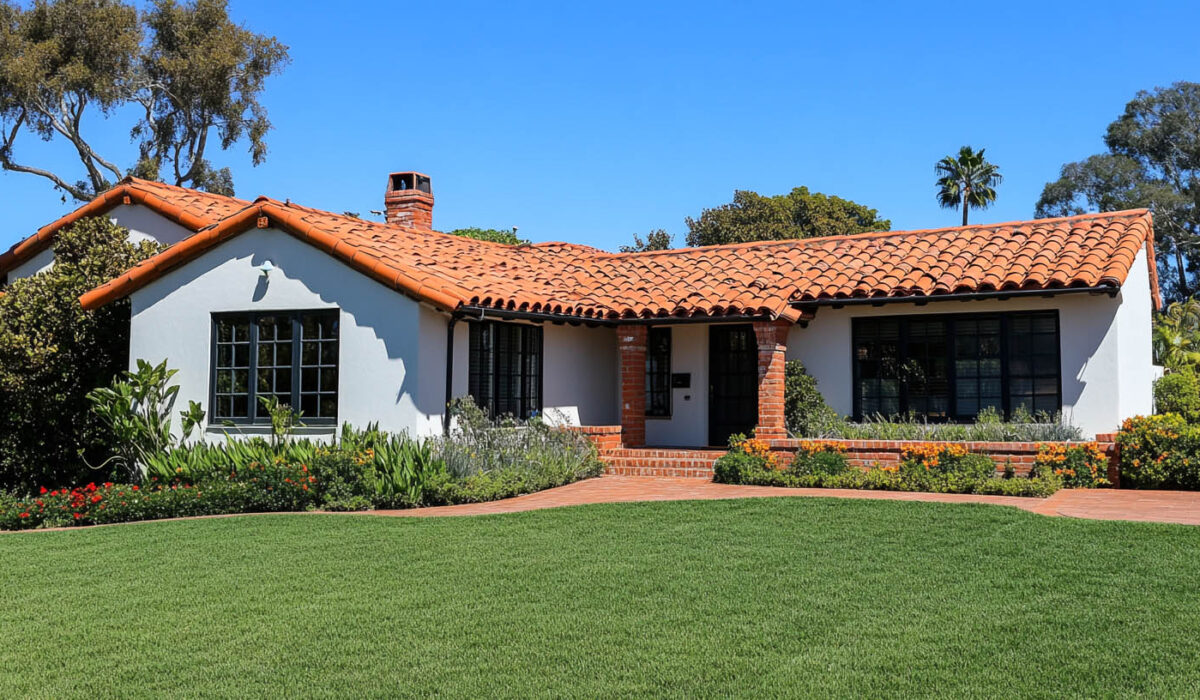There’s something timeless and striking about a home crowned with a clay tile roof. Whether inspired by Mediterranean villas or Spanish colonial architecture, clay tiles offer more than just visual charm—they provide durability, thermal insulation, and long-term value. In a climate like San Diego’s, where sun and salt air are daily elements, clay tiles are not just a design decision but a functional one.
For homeowners ready to invest in the enduring beauty and strength of clay tiles, Tile Roofing San Diego brings decades of expert craftsmanship. Based in San Diego, CA, our team merges old-world roofing traditions with cutting-edge methods as a certified GAF Master Elite Contractor and Owens Corning Preferred Contractor—a distinction that translates into the best warranties in the business.
Why Choose Clay Tiles?
Clay tiles have been used in roofing systems for centuries, prized for their natural composition and aesthetic longevity. Their signature warm terracotta hue pairs perfectly with stucco finishes and arched entries, making them a popular choice throughout Southern California. However, their benefits go beyond good looks.
Clay tile roofs are resistant to fire, mold, insects, and extreme temperatures. They’re also excellent insulators, helping regulate indoor temperatures by releasing heat absorbed during the day back into the atmosphere in the evening. For San Diego homes, this can mean greater comfort and energy savings year-round.
Understanding the Installation Process
While clay tile roofs are built to last, their longevity depends heavily on proper installation. A clay tile roof is not simply about layering tiles—it’s a structural system that requires precision from the very first nail.
Installing a clay tile roof typically involves these key steps:
- Preparing the roof deck with plywood sheathing (usually ½” CDX)
- Applying a high-performance synthetic underlayment
- Installing flashing around eaves, chimneys, and valleys
- Setting up starter tiles that support the first row of curved barrel tiles
- Layering rows of tiles using precise overlap and secure nailing methods
- Topping off with ridge caps and ensuring proper ventilation
One important note is that clay tiles are significantly heavier than other roofing materials. In some cases, especially during reroofing projects, the existing structure may require reinforcement. This is why professional installation is critical.
Clay Tile vs. Composite Tile: Cost Considerations
While traditional clay tile roofing remains a popular choice, newer composite alternatives have begun to appeal to homeowners seeking the same look with fewer drawbacks. A cost comparison can help clarify the best option:
- Clay Tiles: Expect to pay between $7 and $12 per square foot installed. However, long-term maintenance can push total costs much higher. Individual tile repairs, which must be done by specialists, can cost between $9 and $21 per square foot.
- Composite Alternatives: High-quality options like Brava composite tiles range from $8 to $18 per square foot. They require no additional structural support and are virtually maintenance-free, making them an attractive choice for homeowners who want the appearance of clay without the upkeep.
The unique fact is that Brava’s Spanish barrel composite tiles are made from 100% recycled materials and can be recycled again, combining sustainability with striking visual appeal.
Certified Installation Makes the Difference
Installing a clay tile roof is not a DIY project—it requires specialized tools, materials, and knowledge of local building codes. At Tile Roofing San Diego, our certified installers bring decades of hands-on experience to every project. We don’t just follow manufacturer guidelines—we exceed them, ensuring every roof we build meets the highest standards of safety, longevity, and style.
Being a GAF Master Elite Contractor and Owens Corning Preferred Contractor allows us to offer exclusive warranty protections and to stay on the cutting edge of installation technology. Whether you’re replacing a weather-worn roof or planning a new build, our team delivers the craftsmanship that San Diego homeowners deserve.
What to Expect During the Project
For a typical 2,000 square foot home, a clay tile roof installation can take between 5 to 10 days depending on weather conditions, roof complexity, and whether structural upgrades are required. To ensure a smooth project, all materials should be delivered before installation begins, and a clear weather window should be planned to avoid delays.
FAQs
Can I walk on my clay tile roof after installation?
Clay tiles can crack under weight, so walking on them is not recommended unless you’re trained to distribute weight properly. Always call a professional for inspections or maintenance.
What happens if one tile breaks—do I need to replace the entire roof?
No. Individual tiles can be replaced, though exact color matching can be difficult over time. This is why high-quality tiles and proper sealing are critical from the start.
Will my roof need reinforcement for clay tiles?
Possibly. Clay tiles are heavy, and older homes may not have the structural support needed. A licensed roofer will assess and advise before installation begins.
Final Thoughts
Clay tile roofing is more than a finishing touch—it’s a long-term investment in the structure, energy efficiency, and aesthetic of your home. With its historic appeal and practical benefits, clay remains a favorite for discerning homeowners in San Diego. However, installation is everything. Choosing a certified, experienced roofer ensures your investment is protected for decades to come.Interested in how tile roof replacement compares in cost, design, and performance? Learn more about what San Diego homeowners need to know about tile roof replacement.

